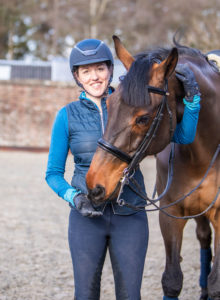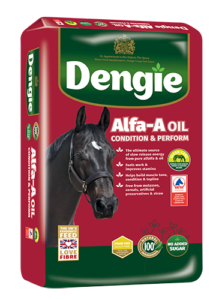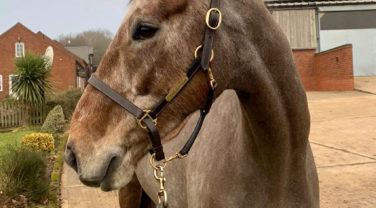What to look for in a Para Dressage Horse
 Dengie supported rider Anna Miller is an advanced dressage rider competing at small tour as well as specialising in coaching para dressage riders and training their horses. Anna trains 8-time Paralympic gold medallist Sophie Christiansen CBE as well as some exciting up-and-coming para riders.
Dengie supported rider Anna Miller is an advanced dressage rider competing at small tour as well as specialising in coaching para dressage riders and training their horses. Anna trains 8-time Paralympic gold medallist Sophie Christiansen CBE as well as some exciting up-and-coming para riders.
Anna often gets asked what she would look for in a para dressage horse for her clients and if there are any attributes that are particularly important. This was something we asked Anna to discuss in our recent webinar where she shared insights into her approach to training horses at different stages in their competitive career. Click here to view the webinar.
Anna explained how the type of horse can really depend on the individual rider’s different abilities and disabilities.
“I try to play to the rider’s strengths. For example, some of my riders don’t have very strong legs, for them I would like a horse to be naturally forward, but at the same time not so sharp that they are going to overreact” explains Anna. “Some horses can’t cope with the involuntary movement whereas others don’t seem to mind at all”.
“Temperament is paramount, but a horse that is too quiet or lazy can make it very difficult for a rider with limited strength in their leg to get the horse going forward. People often think for a para rider you need something very quiet, but often that’s not actually the case”.
“The standard on the para circuit keeps stepping up and you need a high-quality horse to compete at the top level. For me, the walk is the most important pace and must be exceptional. The horse should have a decent trot and canter too, but not so expressive that it is difficult for the rider to stay with the horse”.
What to feed a Para Dressage Horse
The appropriate feed for a para dressage horse varies too depending on whether the horse needs more oomph to encourage them to go forward or a diet that provides slow-release energy for sparkle without the fizz.
Keeping starch intake to a minimum is essential for those that are prone to fizzy or excitable behaviour; as a comparison, a typical ‘Cool’ Mix or Pony Cube would contain around 20% starch compared to feeds in the Dengie Alfa-A range which contain 2% starch.
Slow-release energy comes from fibre and oil. Fibre is broken down slowly in the horse’s digestive system so there isn’t the associated large peak in blood glucose as happens when high starch and sugar feeds are used. Many people under-estimate just how much energy good-quality fibre can contribute to the ration. High fibre ingredients such as alfalfa and sugar beet provide highly digestible fibre and so horses can do really well on them. If however, more energy is required for weight gain, oil can be added as it is very energy dense but still provides slow-release energy. It also helps to increase a horse’s stamina and so is really useful for horses competing and travelling regularly.
Dengie Alfa-A Oil is a great example of a how fibre and oil can be combined to provide plenty of energy for a competition horse. Alfa-A Oil contains as much energy as a competition mix (12.5MJ/kg DE) but with around 10 times less starch. This means it will provide the horse with slow-release energy helping to promote condition without encouraging excitable or anxious behaviour.
For more information or advice on all aspects of feeding call the Dengie Feedline on 01621 841188 or complete our Feed Advice Form.



